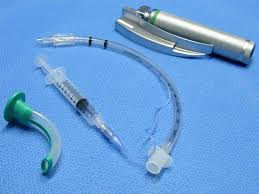How to Measure an ET Tube:14 Steps

Introduction:
Measuring an endotracheal (ET) tube is essential for ensuring that the correct size is used for intubation. Accurate measurement of an ET tube ensures patient safety, reduces complications and enhances the effectiveness of airway management. Here are 14 steps to help you accurately measure an ET tube.
1.Gather the necessary materials: You’ll need an ET tube, a ruler or measuring tape that measures in millimeters, a water-based lubricant, and sterile gloves.
2.Assess your patient’s age and size: One rule of thumb for selecting ET tube size is using the formula (16 + age in years)/4 for older children and adults. For infants and younger children, age-based charts are available to guide sizing.
3.Check the manufacturer’s guidelines: Some manufacturers provide guidelines based on weight or other patient factors.
4.Use cervical landmarks to estimate ET tube insertion depth: Identify the landmarks of the neck to guide your estimation—such as cricoid cartilage, thyroid notch, and sternal notch—and use these points as guides.
5.Sterilize your hands: Wear clean disposable gloves after washing your hands with soap and water.
6.Lubricate the distal end of the ET tube with a water-based lubricant: Be careful not to contaminate the inside lumen of the tube while doing this.
7.Set up your measuring device: Lay out your ruler or measuring tape alongside the ET tube with both the zero-point and final measurement point visible.
8.Measure from distal end to nearest centimeter mark: Place one end of the ruler at the distal end of the ET tube, then read off where it meets a centimeter mark to obtain its length.
9.Measure internal diameter at cuff inflation line: With your ruler or caliper, measure the internal diameter (ID) of the tube at the point where the cuff inflation line exits.
10.Record your measurements: Write down both the total length and internal diameter for future reference.
11.Deflate the ET tube cuff: Before inserting the ET tube, make sure to deflate its cuff to avoid damage during intubation.
12.Verify markings on the ET tube: Tubes typically include manufacturer markings for depth and cuff inflation volume. Measure these markings to confirm they match your earlier measurements.
13.Size-check using a bougie or introducer: If you have any doubts about proper sizing, consider using a bougie or introducer to help confirm that your ET tube is correctly-sized for your patient.
14.Reassess regularly after intubation: After successful intubation, continue monitoring and measuring your patient’s airway to ensure proper placement and patient comfort.
In conclusion:
Proper measurement of an endotracheal tube is crucial in ensuring patient safety and a successful intubation procedure. By following these 14 steps, you’ll be better equipped to accurately measure and select an ET tube for your patients.






